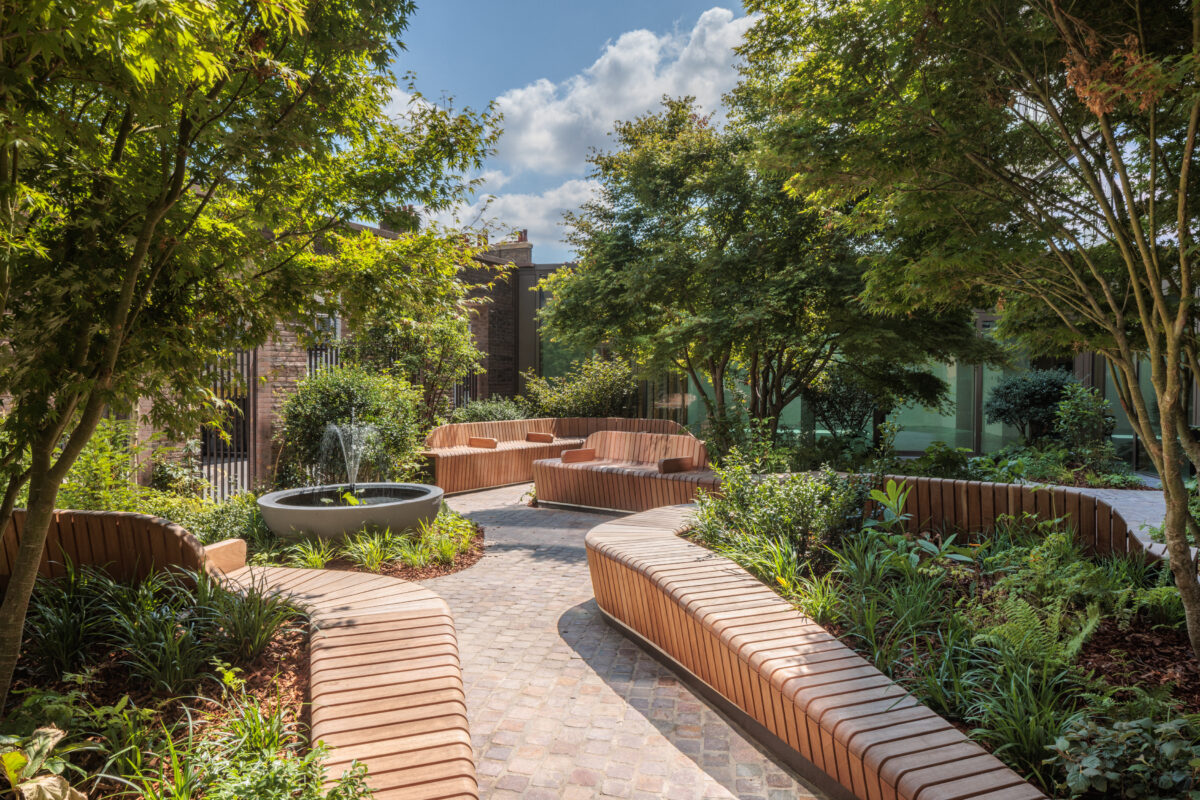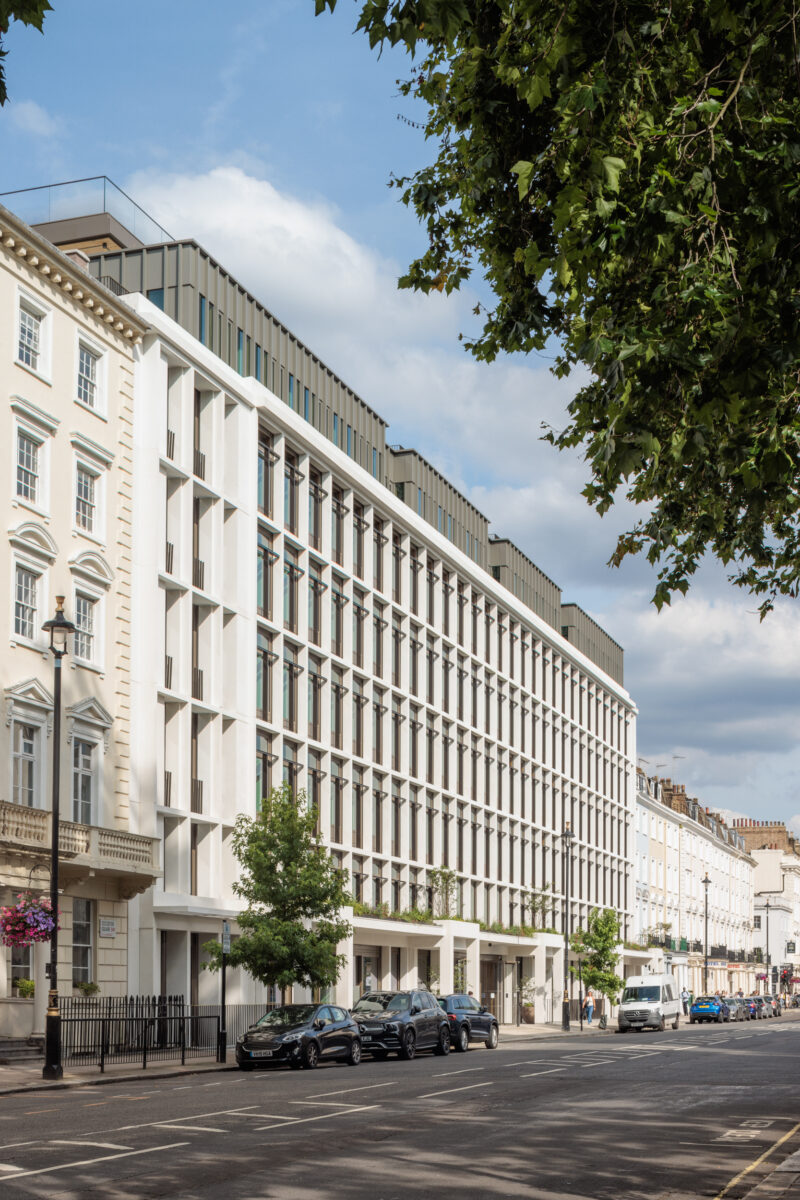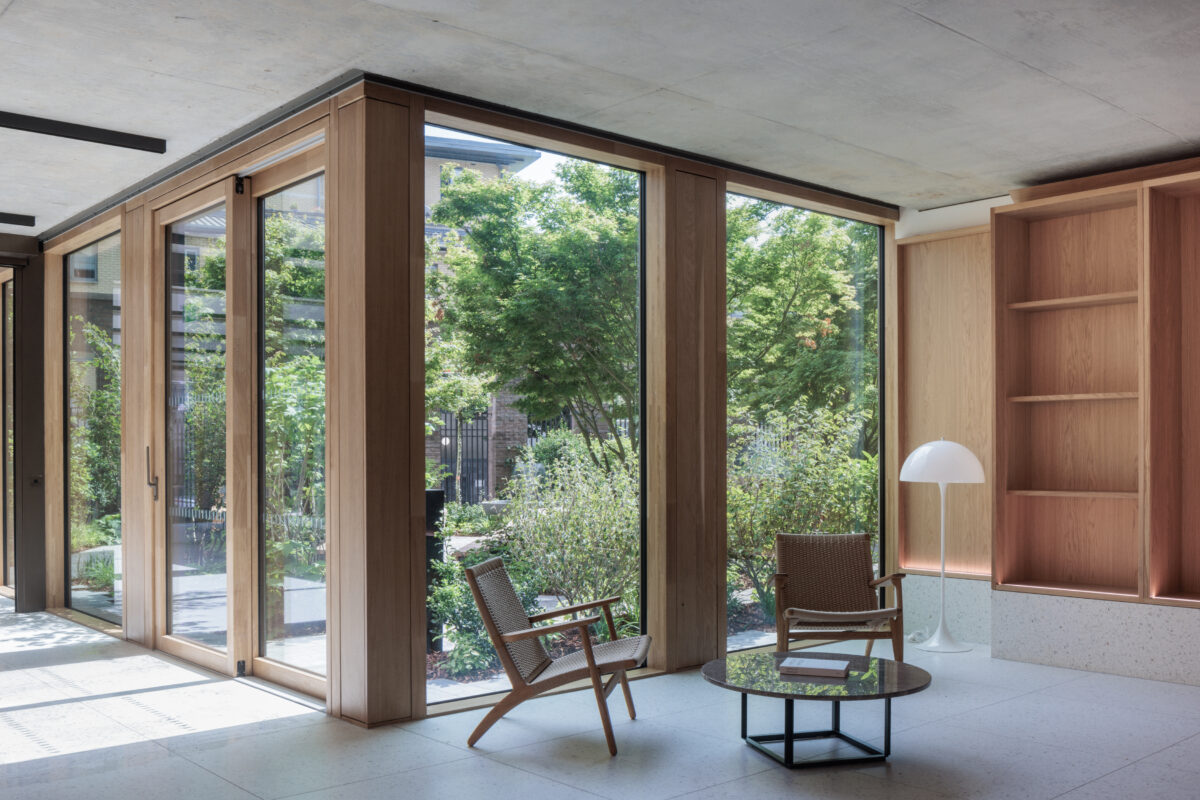Eric Parry Architects completes retrofit of 11 Belgrave Road achieving the highest NABERS DFP score yet

Eric Parry Architects has completed the renewal of 11 Belgrave Road on behalf of leading investor developer Quadrum Global. Comprising just over 150,000 sq ft of Grade A workspace, the project sets a new standard for high quality offices in Victoria, London. Working with MEP Engineer Max Fordham LLP, Structural and Civil Engineer Heyne Tillett Steel, and Landscape Architects, Gillespies, the project team has achieved the UK’s first NABERS DFP score of 5.5 star, as well as achieving BREEAM Outstanding, WELL Platinum, Wiredscore Platinum and Smartscore Platinum.
11 Belgrave Road places a key focus on wellbeing, sustainability and user-centric design. Located less than a ten-minute walk from Victoria train station, the new office space will serve the flourishing business community in the City of Westminster.
The completed project increases the floor area on site by 31% of the previous building and features enhanced community assets, with a publicly accessible café, gymnasium and co-working spaces for both commercial and community hire.
Lewis Benmore, Associate at Eric Parry Architects said:
“11 Belgrave Road exemplifies how modern office buildings can achieve both sustainable and operational excellence while providing spaces and amenity that enhance employee experience and earn the commute by being an asset in peoples working lives.
“The project combines structural re-use, the latest technology and stringent environmental standards. Our work has not just been about meeting today’s expectations but setting new benchmarks for the future of sustainable and healthy workplace design.”


11 Belgrave Road is the complete renewal of a late 1950s office building that was constructed to replace a bomb-damaged 19th Century Church and Victorian townhouses. After more than 70 years, the office accommodation had fallen far behind market expectations and was in need of significant remodelling. In addition, was identified as having a negative impact on the character of the Pimlico Conservation Area, disrupting the characteristic terraces of stuccoed townhouses with a 60-metre frontage of horizontally-expressed brick and concrete.
The project to renew 11 Belgrave Road retained and repurposed an ambitious 35% of total built fabric already on site – including a large section of the concrete structure and foundations. This substantially reduces the lifetime embodied carbon emissions of the project, which has been designed to exceed the RIBA 2030 Climate Challenge embodied carbon target by 38%. Predicted whole-life embodied carbon emissions for the project are 466 kg CO2e/m², with the upfront embodied carbon achieving a LETI A performance of 324 kg CO2 per m². The base build of 11 Belgrave Road is designed to achieve Net Zero Carbon in both Construction and Operational energy in line with the UKGBC Framework. The operational energy of the base building is estimated to be 37.4kWh/m2 (NLA), which is below the RIBA 2030 targets for base building energy consumption and achieves a NABERS rating of 5.5 star.
While working sensitively with the existing structure, the new design has radically transformed the building visually, ensuring that it sits harmoniously within the conservation area. Eric Parry Architects’ new self-supporting precast stone façade to Belgrave Road echoes the rhythm of the adjacent terraces and adopts a modern take on the traditional entrance porticos. This is further reinforced by the first floor planters that continue the line of balcony gardens that run along Belgrave Road.

Behind the pre-cast façade, a high-performance curtain wall system constructed using engineered oak wraps around the main structure. This timber is expressed internally, benefitting the office spaces with the tactile, acoustic and aesthetic properties of the oak. The facades have been designed for future disassembly, to accommodate easy refurbishment and recycling, allowing the sustainability and retention strategy to exceed the building’s lifetime.
A new penthouse office floor has been added, constructed in steel and cross laminated timber, increasing the overall floor space by 31%, from 110,800 sq ft to 145,000 sq ft. The additional floor is set back to create generous garden terraces with a spiral stair leading to a new roof level offering expansive views of the city of London.
The renewal optimised the retained existing structure, and the large openable windows throughout frame key landmarks of the city. These provide excellent levels of natural light, a key principle of the wellbeing design. Complementing the flexible floorplates, smart technology and building management systems have been installed throughout the building to guide occupants and control optimal working conditions and a healthy working environment.

Wellbeing is supported throughout the interior spaces through the use of low-environmental impact, bio-based and recycled materials with a deliberately domestic feel to generate a welcoming environment. A section of the first floor slab has been cut away to create a double-height entrance, enhanced by a library that offers space for relaxation and personal thought. Although infused with a sense of homeliness, the open plan layouts and break out spaces stimulate social activity, collaboration and productivity that employees would not find at home.
Landscaping and biophilia are a core focus of the design, promoting biodiversity and enhancing occupant connection to nature for health and wellbeing. Landscape architects Gillespies’ dynamic and sustainable planting seamlessly weaves throughout garden courtyards, terraces and planted facades. A large garden to the rear of the building is visible from the street, providing urban greening to the nearby area. Edible plants and herbs have been introduced, along with a planned gardening programme to encourage users to engage with nature.
The sustainable redevelopment of 11 Belgrave Road delivers new high-quality office and mixed use space for its users and the public, as well as enhancing the surrounding conservation area with its contextual façades and landscaping.


